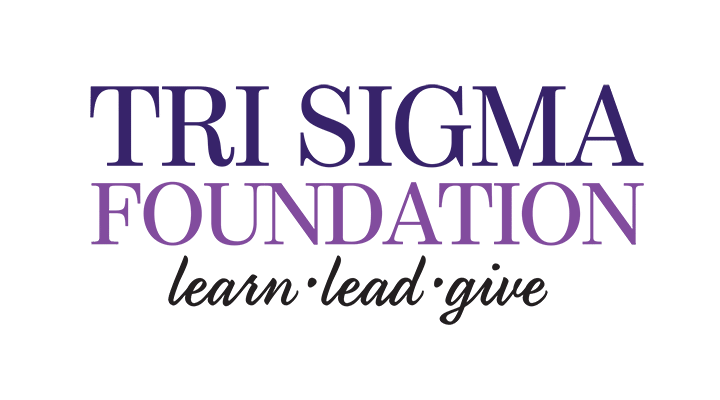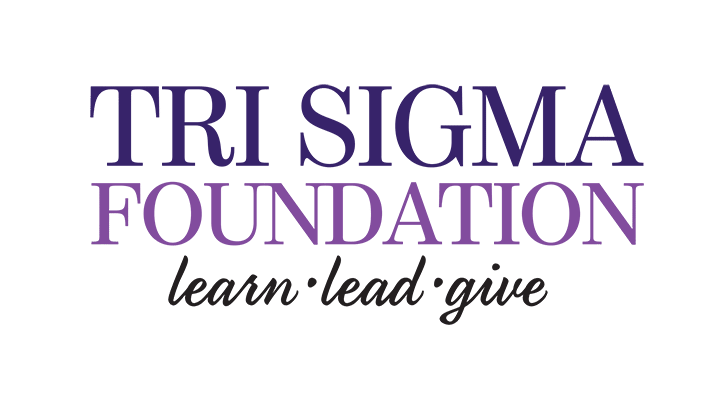April Conversations with Council
Sisters,
Have you ever been curious about how the sorority is actually run and how things operate at the national level? Are you a long-serving, seasoned volunteer still trying to fully understand how things function now, and wondering why we ever stopped using an operational structure? Now that staff has such a large role in sorority operations, is volunteer service still relevant? How do Executive Council, staff and volunteers all work together for the good of the organization in a governance organization?
Now twenty-two months into the triennium, Executive Council has been reflecting on the past seven years since implementing the new governance structure, which was passed at the 2010 Convention.
Why did we adopt a governance model?
Shortly after the start of the new millennium, leaders of Tri Sigma realized the days of a fully volunteer-driven organization were numbered; the work of the Sorority was exceeding the woman-power available through our volunteers. Discussions began on how to position ourselves to hire paid staff to augment the administration of sorority operations and processes for supporting our chapters. When the consideration of moving to governance first came about, Laura Sweet, Past National President (2004-2010), recalls, “In the early years, Executive Council worried about the work load for volunteers. Each Council member was leading a department of 25 – 50 volunteers and depended on those volunteers to supervise collegiate chapters, maintain a high level of watch on risk management policies and adjudicate chapter infractions, publish The Triangle and the multitude of manuals, inspire alumnae chapters, triage chapter recruitment, and conduct national extension efforts – – All being done by a small staff and an army of volunteers with families, home town lives and employment!” So, in 2007, a committee was formed to investigate and make a recommendation on the governance model for Tri Sigma. Laura Sweet added, “I have to laugh because this was during the infancy of Facebook and before iPhones and instant communication. It is hard to imagine how we would have managed the communication streams that occur in our world today.”
Seeing that the traditional operational structure was not sustainable, a governance structure seemed like the best option. There are many variations of governance, and the majority of the NPC member groups are utilizing some sort of governance or hybrid structure. The committee analyzed alternative structures of governance and organizational practices. Ultimately, John Carver’s Policy Governance model caught their eye and became the basis for restructuring our operations and Executive Council.
How does this structure impact Executive Council?
Governance allows Executive Council to be visionary and concentrate on strategic planning for the good of the organization. Executive Council now focuses on big picture and the long term vision and goals for Tri Sigma. They continuously evaluate, assess, and measure the progress and accomplishments of the organization – to lead Tri Sigma and ensure the work done by staff and volunteers continues to fulfill those goals.
Executive Council now indirectly oversees the work of staff members and volunteers, but only with regard to ensuring the daily operations of the sorority fit within the strategic vision. This structure also allows for a larger pool of members to ascend to serve on Executive Council. Traditionally, members of Executive Council had risen “through the ranks” of the various volunteer positions and came to Council with extensive knowledge of Tri Sigma’s operations, but sometimes with little other experience. Having removed departmental oversight from Executive Council’s core responsibilities, service by women who have professional experience, business knowledge, have served on other boards, and are good strategic and visionary thinkers are especially valued in carrying out the long term strategy of the sorority.
So, if Executive Council sets the vision and direction through the strategic plan and through policy, is staff responsible for executing and achieving the goals and objectives?
Yes! But the staff cannot accomplish this alone, and there continues to be a great need for dedicated volunteers who will partner with staff. Members of staff direct the operations, but it’s the commitment of our volunteers and their love for Tri Sigma that makes the difference in the daily business of running the sorority. We realize there have been some bumps in the road and in many ways Executive Council and National Headquarters are still figuring out the right combination of staff and volunteers, and the best organizational method for serving the membership.
During a Council meeting last year, we were assessing our level of success in implementing the practices of the governance model and the challenges or growing pains we were still experiencing. Marcia Cutter, Executive Director, shared a very good point – we have only been operating under this new model for less than a decade. Compare that to over 100 years of operating under an operational driven model! Moving from an operational model to a governance model has required a paradigm shift that has not been without challenges and wrong turns. In some instances we have had to revert back to a prior process. We acknowledge that during the transition of workload between volunteers and staff, some of the historical knowledge was lost. We have had to add or eliminate positions to better fill the administrative needs. We have had to revisit how our volunteers have opportunity for growth under this new structure and how we are cultivating members to serve on Executive Council in the future. We have even asked the question, “Are we still a volunteer-driven organization?” Today, we continue to repeatedly ask questions about how our volunteers and staff can partner under a governance model to carry out the strategic plan set forth by Executive Council.
Throughout the triennium thus far, Executive Council has set aside time to study industry best practices, read about alternative governance models, and consider various theories of application. Most recently, Executive Council and staff directors read the book “Race For Relevance”, authored by Harrison Coerver and Mary Byers, and discussed ways we might incorporate some of the philosophies from the book into the administration of Tri Sigma.
Collectively, we as Council members have over 175 years of experience volunteering for Tri Sigma. We have served under both the operational model and the governance model and realize it is not by the nonchalant flip of a switch that we effortlessly and flawlessly execute under a new governance model. Rather, it takes practice, trial-and-error, mistakes, patience, perseverance – and most importantly – flexibility in adjusting how we apply the model to best serve the needs of Tri Sigma. We all want what is best for Tri Sigma and to assure Her successful existence long after we have served.
Empowered,

Executive Council
P.S. We encourage you to send questions or comments to us at cwc@trisigma.org.

